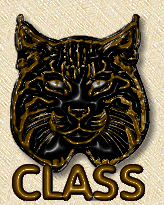|
Cymric
Temperament:
*Friendly and Even Tempered
*Loving
*Playful
*Communicative but with a Soft Voice
"The Cymric is especially good with children and other pets."
Cymrics are treasured companions. It has a reputation for being "dog
like"; following its people around the house, learning tricks, enjoying a
game of fetch, even protecting the home. (And to think some people settle for
canines...)
|
| Head: Rounded,
with prominent, well developed cheeks and short neck |
| Eyes: Large,
round, bright; all colors |
| Ears: Wide
set, tufted, rounded, broad based |
| Body: Medium
size, round, solid, compact, big boned, full-chested with short back; rump
much higher than shoulders |
| Coat: Medium
length; shiny, soft, silky, double coat |
| Tail: Virtually
none (for show) |
| Patterns: All colors and patterns
except pointed |
Breed History: The
tiny Isle of Man, in the middle of the Irish Sea between Ireland and Wales, is
generally recognized as the original home of the tailless Manx cat. Here, too,
lies the ancestry of the Cymric- which is nothing other than a longhaired
Manx.
It was in Canada, in the 1960's, that the longhaired Manx was first
established as a separate breed. The new breed was named Cymric, which in the
Welsh language means "Welsh". Appropriate, eh? (Some cat
associations have dropped the name and instead have divided the Manx into
Long- and Short- haired groups.)
Like the Manx tail, the Cymric tail actually comes in a variety of lengths.
The "rumpy" Cymric is completely tailless, often with a dimple where
the tail should be, and is the most desired show type. The "rumpy
riser" has a short knob made of cartilage rather than bone and may also
be admitted to the showring. The "stumpy" has a very short, but
visible, tail, and the "longy" has a longer tail.
|
| Additional Notes: |
|

|
|

|
|

|

|

|
|